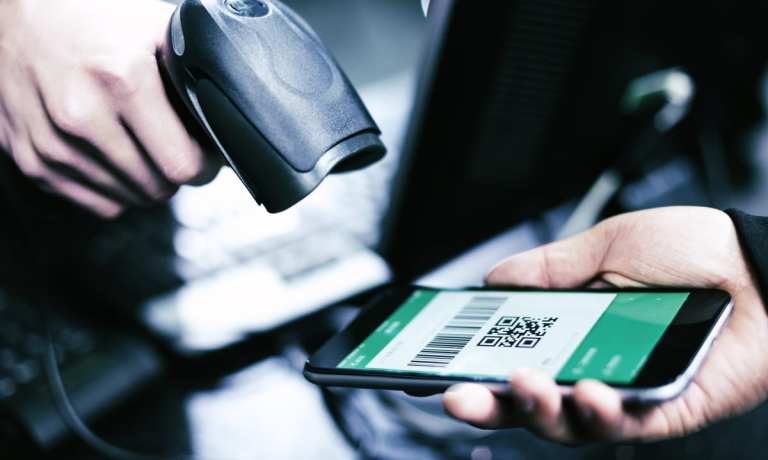
In the latest evidence of how what’s old is new again — or at least of a technology that’s continuing to find its moment amid the pandemic and the great digital shift — consider the QR code.
All manner of in-person commerce, where money and goods and services, pre-pandemic, had been moved, literally, hand to hand, across registers, tables and on shelves, is pivoting toward this avenue of payments acceptance — a nod to social distancing.
Quick Response codes (QR codes for short), are the ubiquitous patterned codes, boxy in shape, with their genesis from the 1990s, in Japan, and roots in the auto industry. But through the decades, the codes have been appearing in eateries, on packaging, in all sorts of locations, chiefly as a way to provide information about, say, the specials of the day, or the fabrics contained in a shirt. The smartphone, of course, has become the way of capturing and using that data, through aiming a camera at the code and gaining access to the data or making the payment. That can make the point of sale a package, a window, a payment made, literally, on the fly in a curbside pickup setting or upon delivery of an item.
Touch-free, of course, is the key. The verticals that stand to gain from offering QR codes are eateries, of course, and retailers, but also the smallest of small firms, such as contractors. One advantage is there is not much tech heavy lifting involved to create the codes or scan them.
To that end, as reported Tuesday (April 27), Fiserv is rolling out new functionality that will let enterprises of all sizes — smaller firms using Clover and larger firms using Carat — accept payments from PayPal and Venmo through QR codes presented at the point of sale.
In terms of mechanics, consumers can initiate payments by scanning QR codes with the PayPal or Venmo apps, and receive digital receipts, according to the Tuesday announcement. Among the first venues to enable the capabilities via Bypass point-of-sale software from Fiserv and Clover devices will be the Phoenix Suns Arena, home to the eponymous basketball team.
Foot Traffic, But Changed Commerce Landscape
The announcement is among one of the latest crystallizations of PayPal’s strategy to boost touch-free payments, particularly through QR codes as foot traffic returns to a changed world.
As reported in this space as the pandemic raged on through the summer, Karen Webster spoke with Jeremy Jonker, senior vice president, head of consumer in-store and digital commerce at PayPal. Then, the company had announced more than two dozen pilots throughout the world, within the larger trend of conducting in-person transactions, but with public health in mind, Jonker said. “[PayPal] accelerated the efforts around QR codes … because our consumers and merchants are demanding and requesting contactless payments, [but] a lot of payment methods today aren’t necessarily contactless,” Jonker said. “You still have to do a signature … you still have to put in PIN codes. What we developed … is purely and truly contactless.”
At a high level, he said, “the beauty of QR codes is that it is a contactless payment, but it’s not necessarily limited to a structured retail environment. It’s completely unstructured. You can take it and transact in any context, in any channel.”